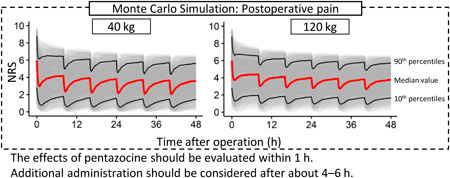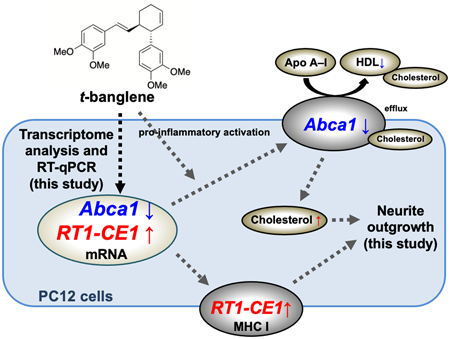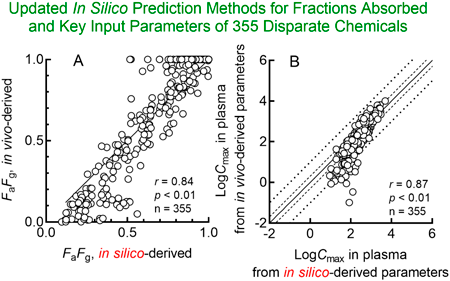- |<
- <
- 1
- >
- >|
-
2022Volume 45Issue 12 Pages 1728-1732
Published: December 01, 2022
Released on J-STAGE: December 01, 2022
Download PDF (799K) Full view HTML
-
2022Volume 45Issue 12 Pages 1733-1742
Published: December 01, 2022
Released on J-STAGE: December 01, 2022
Download PDF (10428K) Full view HTML -
2022Volume 45Issue 12 Pages 1743-1753
Published: December 01, 2022
Released on J-STAGE: December 01, 2022
Advance online publication: September 22, 2022Download PDF (14322K) Full view HTML -
2022Volume 45Issue 12 Pages 1754-1763
Published: December 01, 2022
Released on J-STAGE: December 01, 2022
Download PDF (3667K) Full view HTML -
 2022Volume 45Issue 12 Pages 1764-1771
2022Volume 45Issue 12 Pages 1764-1771
Published: December 01, 2022
Released on J-STAGE: December 01, 2022
Editor's pickAlthough inhaler drugs are the mainstay of treatment for obstructive lung diseases, some of these patients have inadequate skills in inhaler use, and pharmacists have limited time to provide inhaler instruction in daily clinical practice. The authors aimed to investigate the instruction methods provided by community pharmacists and their influence on inhaler handling techniques. They found that patients without critical handling errors received demonstration instructions from pharmacists combined with leaflets and verbal explanations more frequently than those with critical errors. The finding of this study indicates combined instructional approach including pharmacist demonstration may be effective in improving inhaler treatment outcomes.
Download PDF (425K) Full view HTML -
2022Volume 45Issue 12 Pages 1772-1783
Published: December 01, 2022
Released on J-STAGE: December 01, 2022
Download PDF (6058K) Full view HTML -
2022Volume 45Issue 12 Pages 1784-1790
Published: December 01, 2022
Released on J-STAGE: December 01, 2022
Advance online publication: September 23, 2022Download PDF (1615K) Full view HTML -
 2022Volume 45Issue 12 Pages 1791-1797
2022Volume 45Issue 12 Pages 1791-1797
Published: December 01, 2022
Released on J-STAGE: December 01, 2022
Editor's pickNeudesin is a secretory protein, originally identified as a neurotrophic and neuroprotective factor. Although neudesin is widely expressed in various organs in mammals, its function in the tissues other than the nervous system and adipose tissues remains unknown. In this manuscript, the authors examined the phenotype of Neudesin-knockout mice and found a testicular hypoplasia emerging from early postnatal stages. Despite the smaller testes in the adult Neudesin-knockout males, they produced healthy sperm and retained their fertility. This study revealed a novel function and versatility of neudesin.
Download PDF (8817K) Full view HTML -
 2022Volume 45Issue 12 Pages 1798-1804
2022Volume 45Issue 12 Pages 1798-1804
Published: December 01, 2022
Released on J-STAGE: December 01, 2022
Editor's pickT cells play important roles for protection against infection and cancer. Upon interaction with OX40 ligand (OX40L, TNFSF4), OX40 expressed by activated T cells promotes the production of long-lived memory T cells. However, it remains unclear how better activity of OX40 can be induced by a designer OX40L protein. A soluble OX40L possessing a collagenous trimerization domain from mannose-binding lectin was prepared in this study, and this novel protein functioned as a superior agonist both in vitro and in vivo. The authors propose that activity of OX40L can be engineered to elicit robust T cell responses by rational structural design.
Download PDF (877K) Full view HTML -
 2022Volume 45Issue 12 Pages 1805-1811
2022Volume 45Issue 12 Pages 1805-1811
Published: December 01, 2022
Released on J-STAGE: December 01, 2022
Editor's pickBevacizumab is a monoclonal antibody that blocks VEGF receptors, thereby inhibiting angiogenesis in cancer cells and stopping tumor growth. However, bevacizumab inhibits signaling pathways involved in angiogenesis, which may lead to central nervous system (CNS) ischemia. However, its definitive characteristics have not been elucidated. Therefore, authors analyzed the JADER database to determine the incidence and characteristics of CNS ischemia in patients receiving VEGF inhibitors. Significant signals associated with CNS ischemia were detected in patients receiving bevacizumab. The results also suggested that bevacizumab-associated CNS ischemia was associated with a diagnosis of glioma, underlying hypertension, and aging.
Download PDF (757K) Full view HTML -
2022Volume 45Issue 12 Pages 1812-1817
Published: December 01, 2022
Released on J-STAGE: December 01, 2022
Advance online publication: September 28, 2022Download PDF (1146K) Full view HTML -
2022Volume 45Issue 12 Pages 1818-1824
Published: December 01, 2022
Released on J-STAGE: December 01, 2022
Download PDF (9343K) Full view HTML -
2022Volume 45Issue 12 Pages 1825-1831
Published: December 01, 2022
Released on J-STAGE: December 01, 2022
Download PDF (963K) Full view HTML -
2022Volume 45Issue 12 Pages 1832-1838
Published: December 01, 2022
Released on J-STAGE: December 01, 2022
Download PDF (6718K) Full view HTML -
2022Volume 45Issue 12 Pages 1839-1846
Published: December 01, 2022
Released on J-STAGE: December 01, 2022
Advance online publication: October 13, 2022Download PDF (859K) Full view HTML
-
2022Volume 45Issue 12 Pages 1847-1852
Published: December 01, 2022
Released on J-STAGE: December 01, 2022
Download PDF (1444K) Full view HTML -
2022Volume 45Issue 12 Pages 1853-1856
Published: December 01, 2022
Released on J-STAGE: December 01, 2022
Advance online publication: October 08, 2022Download PDF (284K) Full view HTML -
2022Volume 45Issue 12 Pages 1857-1861
Published: December 01, 2022
Released on J-STAGE: December 01, 2022
Advance online publication: September 27, 2022Download PDF (4175K) Full view HTML
- |<
- <
- 1
- >
- >|


















